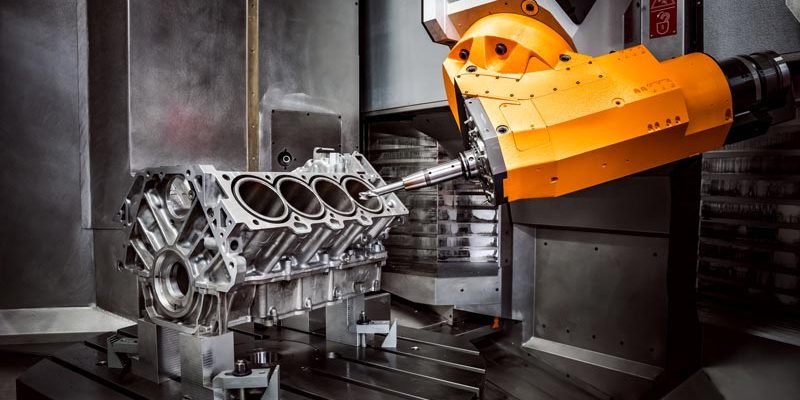This article, provided by Tom, a senior CNC technician with 10 years of experience at 2F Prototypes, offers insights into common issues and improvement methods in the CNC machining process. Derived from practical production experience, it summarizes key problems and suggests solutions. Additionally, it provides guidance on how to choose speed, feed rate, and cutting depth—three crucial factors—in different application scenarios for reference.
1.Excessive Material Removal
Causes:
1).Tool springing due to insufficient tool strength—either too long or too small, leading to tool springing.
2).Improper operator handling.
3).Uneven cutting allowance (e.g., leaving 0.5 on curved surfaces and 0.15 on the bottom).
4).Inappropriate cutting parameters (e.g., overly large tolerances, too fast SF setting).
Improvements:
1).Principle of tool usage: Use larger tools when possible and shorter ones when necessary.
2).Add a corner-clearing program; strive for uniform cutting allowance (consistent allowance on the side and bottom).
3).Adjust cutting parameters reasonably; round corners with large allowances.
4).Utilize the machine tool SF function; operators fine-tune speed to achieve optimal cutting.
2.Centering Issues
Causes:
1).Inaccuracies during manual operator handling.
2).Burrs around the mold.
3).Magnetic interference with the centering bar.
4).Mold edges not perpendicular.
Improvements:
1).Conduct repeated and meticulous checks during manual operations; strive for the centering at the same point and height.
2).Use oil stones or files to remove burrs around the mold, clean with a cloth, and confirm manually.
3).Demagnetize the centering bar before centering (use ceramic centering bars or alternatives).
4).Use a caliper to check if mold edges are perpendicular (significant perpendicularity errors need discussion with the machinist for a solution).
3.Tool Setting Issues
Causes:
1).Inaccuracies during manual operator handling.
2).Incorrect tool clamping.
3).Errors in the tool blade on the fly cutter (the fly cutter itself has some inherent error).
4).Variations between R-type, flat-bottom, and fly cutter.
Improvements:
1).Repeated and meticulous checks during manual operations; ensure tool setting is at the same point.
2).Use an air gun to clean or wipe the tool holder with a cloth during tool clamping.
3).Measure the tool blade on the fly cutter; use a single blade when inspecting the bottom surface.
4).Develop a separate tool-setting program to avoid errors between R-type, flat-bottom, and fly cutters.
4.Collision – Programming
Causes:
1).Insufficient or non-existent safety height (collision during rapid feed G00 when the tool or holder hits the workpiece).
2).Discrepancy between the tool listed in the program and the actual tool used.
3).Errors in tool length (cutting edge length) and actual processing depth as listed in the program.
4).Errors in Z-axis values between the program and actual Z-axis values.
5).Incorrect coordinate setting during programming.
Improvements:
1).Accurately measure the height of the workpiece and ensure the safety height is above the workpiece.
2).Ensure consistency between the tool listed in the program and the actual tool used (preferably use automated program generation or generate programs from images).
3).Measure the actual processing depth on the workpiece, clearly indicate the tool’s length and cutting edge on the program (usually, the tool clamp length is 2-3MM above the workpiece, and the cutting edge avoids gaps by 0.5-1.0MM).
4).Manually set Z-axis values on the workpiece and clearly indicate them in the program (this operation generally requires careful manual operation and repeated checking).
5.Collision – Operator
Causes:
1).Errors in Z-axis depth setting.
2).Errors in touch-off and tool change (e.g., no approach radius for single-sided indexing).
3).Use of the wrong tool (e.g., using a D10 tool for D4 tool operations).
4).Program deviation (e.g., A7.NC goes to A9.NC).
5).Incorrect direction when manually turning the handwheel.
6).Incorrect direction during manual rapid feed (e.g., pressing +X instead of -X).
Improvements:
1).Pay close attention to the Z-axis depth setting; be aware of the tool’s position (bottom, top, analysis surface, etc.).
2).After touch-off and tool change, perform repeated checks.
3).During tool clamping, ensure the operator checks and compares with the program before clamping.
4).Execute the program step by step in sequence.
5).For manual operations, operators should enhance their proficiency in operating the machine tool.
6).During manual rapid movements, raise the Z-axis above the workpiece before moving.
6.Surface Accuracy
Causes:
1).Unreasonable cutting parameters leading to rough surfaces on the workpiece.
2).Dull tool cutting edges.
3).Excessive tool clamping length and cutting edge clearance.
4).Chip removal, air blowing, and oil flushing inadequacies.
5).Programming toolpaths (consider using climb milling as much as possible).
6).Burr formation on the workpiece.
Improvements:
1).Set reasonable cutting parameters, tolerances, allowances, and speed/feed settings.
2).Regularly check tools, replacing them when necessary.
3).During tool clamping, insist on shorter clamping and avoid excessive cutting edge clearance.
4).For flat, R-type, and round-nose cutters, set a reasonable speed/feed for down-cutting operations.
5).Burr formation is related to machine tools, tools, and toolpath strategies. Understand the performance of the machine tool and apply toolpaths to address edges with burrs.

